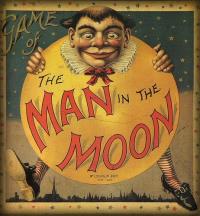Which is the only vowel on most computer keyboards that is not on the top line of letters?
'QWERTY' is a keyboard design for Latin-script alphabets. The name comes from the order of the first six keys on the top left letter row of the keyboard (Q W E R T Y).The original 'QWERTY layout' is attributed to a typewriter inventor, Christopher Sholes, and it made its debut in its earliest form in 1874.
The construction of the first keyboards had two flaws that made the product susceptible to jams. Characters were mounted on metal arms or type bars, which would clash and jam if neighbouring arms were pressed at the same time or in rapid succession. Secondly, its printing point was located beneath the paper carriage, invisible to the operator, a so-called "up-stroke" design.
Typewriter Jams were especially serious, because the typist could only discover the mishap by raising the carriage to inspect what had been typed. The solution was to place commonly used letter-pairs (like "th" or "st") so that their type bars were not neighbouring, avoiding jams. Sholes went through several design iterations, attempting to bring the typewriter to market. He decided to insert the A key on the second line so less type arms jams could occur.
The 'QWERTY-based layout' is used as default in the currently most popular operating systems: Windows, Mac OS X and Linux. The words 'typewriter', 'proprietor', 'perpetuity', and 'repertoire' are the longest English words that can be written using only the keys in the top row.
More Info:
en.wikipedia.org









